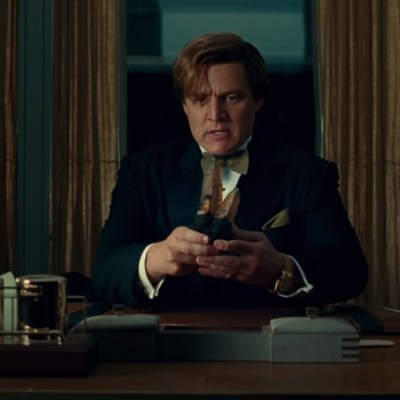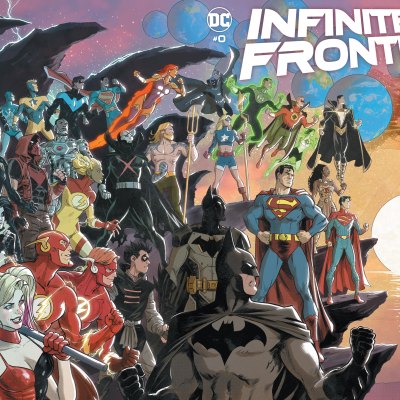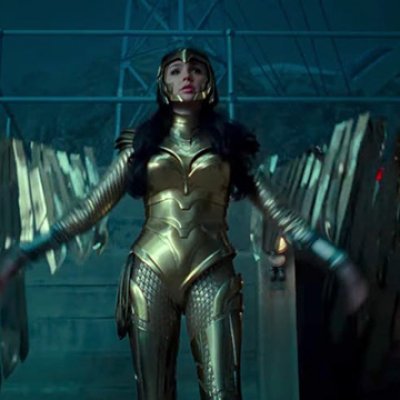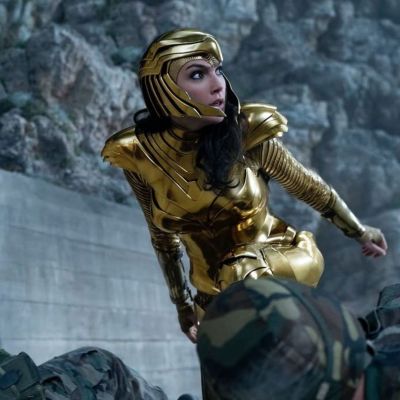Wonder Woman 1984: Ending Explained
All your questions about the Wonder Woman 1984 ending answered.
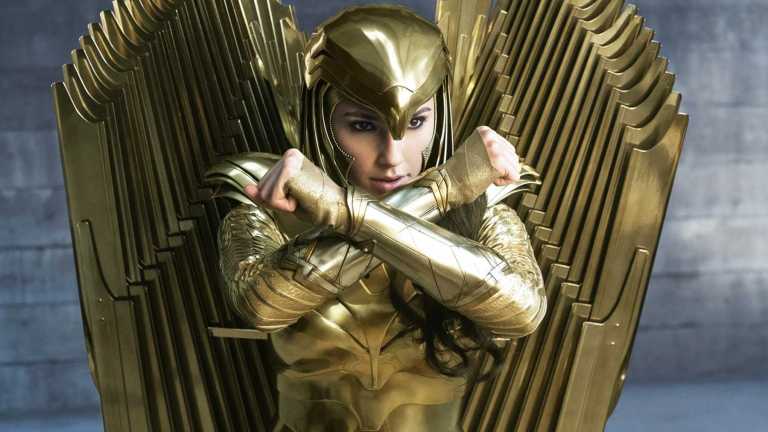
This article contains major Wonder Woman 1984 spoilers for the ending of the film. We have a spoiler free review here.
Wonder Woman 1984 fits a lot of story into its 2.5 hour runtime, especially in its action-packed third act as Diana faces off against not one, but two villains: Cheetah and Maxwell Lord. While audiences have been encouraged to think of the DC blockbuster as a relative standalone, there’s much about the sequel that harkens back to the first film (Steve Trevor, most of all) and there’s much about the movie that hints at what’s to come for our eponymous hero.
If you have some burning questions coming out of Wonder Woman 1984, you’re not alone. What happens at the end of the superhero sequel? What might it mean for the future of the franchise? And which characters might be back for future installments?
We have those answers and more ahead…
Will Steve Trevor Be Back?
Coming into Wonder Woman 1984, one of the central plot mysteries was: how the hell is Chris Pine back as Steve Trevor? We now know the answer: After Diana wishes on the Dreamstone for her dead beau’s return, Steve’s spirit or soul or something is resurrected in the body of a local engineer played by Kristoffer Polaha, credited only as “Handsome Man.” While the rest of the world sees the body of “Handsome Man” when they look at the Steve-possessed body, Diana only sees Steve.
Unfortunately for Steve, Diana must renounce her wish to save the world, sending Steve back from the apparently nice place from whence he came. The movie ends with Steve once again dead, probably never to return. As he tells Diana in his final scene, “I’m already gone.”
But will he be back? It doesn’t seem likely. Wonder Woman 1984 goes out of its ways to maintain the weight of death in its world, creating a very specific scenario in which Steve and Diana can be temporarily reunited. If Wonder Woman 3 were to bring Steve back again, it would be even harder to maintain the stakes and logic of the world and, honestly, Patty Jenkins is too good of a filmmaker to make a mistake like that.
Sorry, Steve fans. Chris Pine has to go play Dungeons & Dragons now.
Wonder Woman Can Fly Now
In her heartbreak over losing Steve (again), Diana runs. Then, she flies. Using what Steve taught her about how he understands flight (“It’s so easy, really. It’s wind and air, learning how to ride it, how to catch it,”) she uses her Lasso to snag the tail of a plane that pulls her far and fast up into the sky. She spreads her arms, and catches the wind. She uses her Lasso to snag clouds and the occasional lightning bolt to propel her forward, and then she soars.
New power: unlocked.
It’s Diana’s accomplishment, but it’s also a symbol of how much Steve has affected her life. In the beginning of the movie, we see how much Diana still thinks about Steve. She tells Barbara that she still sees him sometimes, in the sky. Later, she tells Steve that she’s always thought of flight as his gift. In this way, flight becomes Steve’s parting gift to Diana. Before, she would look up to the sky and think of Steve as a plane flew overhead. Now, she gets to be the one in the sky, thinking of Steve as she does the thing he so loved.
What is the comic book precedent for this? In her original comic book incarnation, Diana couldn’t fly, but Wonder Woman has never been a character to accept limitations. During the Silver Age of Comics, Diana learned how to glide using the air currents, but it wasn’t until after the Crisis on Infinite Earths reboot that Diana full-on flew. In her post-Crisis origin story by George Perez, Diana was gifted the ability to fly from Hermes. In Wonder Woman 1984, it’s a skill she learns in the World of Men.
Patty Jenkins told Den of Geek and other outlets during a recent press junket: “I love that she learns how to fly in this emotional way, and that that metaphor stands for something for all of us, which is you have to let go and embrace the truth and things for what they are to understand that it’s just wind and air.”
Maxwell Lord Uses a Satellite to Grant the World’s Wishes
While Diana is going on an emotional journey about Steve, Max Lord is continuing his quest for MORE—more wishes, more power, more everything. After visiting the Oval Office, he has gained access to the government’s Atmospheric Satellite Defense program (which POTUS tells us uses Star Wars technology). Using Marine One (with Barbara in tow), Lord travels to the satellite facility where he is able to simultaneously hijack every broadcast signal around the world to deliver his message: make a wish, and I will grant it.
The logic here is all a bit hand wave-y. The Dreamstone rules require that people be touching the Stone, in this case Lord, when they make their wish. Screenwriters Patty Jenkins, Geoff Johns, and David Callaham seem to be making a statement about mass media with this plot point (which isn’t so surprising, given their professions): that media has the power to “touch” people.
Regardless of the logic, people around the world start wishing, not understanding the power of their words. A Chinese woman working in a restaurant wishes to be famous, and is immediately recognized through the window. An Irish man wishes that his partner would drop dead, and she does, only moments after she wishes that all of the Irish people in the U.K. would be sent back to “where they came from.”
Elsewhere in the world, a man wishes for nukes for his country. The world erupts in chaos. The Soviet Union launches nukes towards the U.S., in retaliation for the new weapons POTUS wished for; the U.S. fires back. It’s a mess.
Wonder Woman Faces Off Against Cheetah in Asteria’s Golden Armor
Before Diana can stop Max Lord, however, she has to get through her friend, Barbara, who has entered full-on Cheetah mode. While most people only got one wish from the Dreamstone, Dr. Minerva got two. After Barbara saved him at the White House, Max told Babs: “I’ve never been one for rules … Tell me, what do you want? I’m feeling generous.” So she wishes for even greater power: “I don’t want to be like anyone anymore. I want to be #1. An apex predator, like nothing there’s ever been before.”
Yes, friends, she is now a cat.
While Barbara pretty easily dealt with a wish-weakened Diana at the White House, tossing her around like she was nothing, Cheetah ultimately proves to be no match for Diana at her full strength, in Asteria’s Golden Armor. As we learned earlier in the film, Asteria was the Amazonian’s fiercest warrior. When the Amazons escaped to Themyscira, someone had to stay behind to keep the encroaching men at bay. That person was Asteria, wearing armor forged from all of the Amazonian armor. Diana found it when she came to the World of Men, but she never found Asteria…
Cheetah claws her way through the armor’s wings, but Diana doesn’t need those—not really. After a swinging battle, Diana gives Barbara one last chance to renounce her wish. Barbara doesn’t, and Diana uses a nearby downed power line to electrocute Cheetah into submission. Does she know this won’t kill Barbara? Honestly, probably not. Who even knows the limits of a half-human, half-cheetah creature that, by wish definition, has no precedent? It doesn’t kill Barbara, though, and Diana leaves her weakened on the ground outside of the satellite facility.
Diana Uses Her Lasso to Show the World the Truth
Midway through the movie, Diana tells Steve (and us) that the Lasso of Truth doesn’t just have the power to make people tell the truth; it also has the power to make people see the truth. This comes back in a big way in the movie’s climax, when Diana furtively snakes her Lasso around Maxwell Lord’s ankle while he is broadcasting to the world in order to speak to all of the wish-makers herself, in order to make them see the truth of what their wishes are costing the world.
“The world was a beautiful place, just as it was. You cannot have it all. You can only have the truth ,” she tells them before also recognizing and validating their pain. “You’re not the only one who has suffered, who wants more, who wants them back, who doesn’t want to be scared anymore or alone or frightened or powerless … Because you’re not the only one who imagined a world where everything was different, better … But what is it costing you? Do you see the truth?”
It’s a particularly strong message on a thematic level: the idea that we, as a world, need to see through the lies of capitalism and consumerism to the truth. That “more” doesn’t come without a cost, one that is hurting not only ourselves but the entire world. From climate change to global and domestic inequality (both complex issues that represent the devastating human cost of late stage capitalism), it’s not hard to see the real-world applications to this theme.
Max Lord is Saved By the Power of Fatherhood
With Diana’s help seeing the truth, people around the world begin renouncing their wishes. And, eventually, so does Maxwell Lord. Diana helps him see the truth of what his wish is costing him: his son, Alistair. Then, it is an easy choice for Lord. He chooses his son, over power, greed, over more. He chooses the joy and love of his present and future over the pain of his past, which we see in flashbacks: The trauma he suffered watching his father hurt his mother, from being poor, from being socially isolated growing up.
With Diana’s help, Max recognizes the truth of all that he already has in Alistair. In the film, fatherhood represents a kind of sustainable abundance that the Dreamstone could never give. Because of this, Max is finally able to be truthful with Alistair: “I’ve been lying to you. I’m a pretty messed up loser guy,” giving his son a truth that we get the impression Young Max was never granted: “You don’t ever have to make a wish for me to love you.”
In return, Alistair reminds Max that he doesn’t need to earn his preciousness. He has always been worthy of love, even when the world failed him and the people in his life weren’t able to give it to him. “I already love you, Daddy,” Alistair tells Max. “Because you’re my dad.”
Does Barbara Renounce Her Wish?
Max Lord definitively renounces his wish at the end of Wonder Woman 1984 in order to save son Alistair, but the choice is much murkier when it comes to Dr. Barbara Minerva. In her final shot of the film, Barbara is no longer in Cheetah form, but we also never see her explicitly renouncing her wish. According to Patty Jenkins, the ambiguity was intentional.
“I have my reasons for making it ambiguous, and I think it’s not clear what her point of view [is] on everything that just happened … I love that we wrap up Max Lord’s point of view, and that you see the culmination of that storyline, I think is so important. But the truth is there may or may not be more to come [for Barbara].”
It sounds likely that we will see Cheetah again.
Why Does Wonder Woman 1984 End at Christmas?
Originally, Wonder Woman 1984 was supposed to be a summertime release. No one could have predicted the circumstances that would lead to the many delays, and an eventual global release during the Christmas 2020 season. However, the film’s final scene is very Christmas-y. Patty Jenkins told Den of Geek and other outlets during a recent press event that she had thought about re-filming it, but ultimately decided against it. Now, it works perfectly!
Interestingly, it also means that this final scene takes place roughly five months after the events of most of the movie, which takes place around the Fourth of July, as we see from the Invisible Jet scene. Emotionally, this works really well as it makes sense that Diana would need some time to get over losing Steve again, and might not be ready to fully embrace the wonder of the world around her right after having to say goodbye. In other words: this feels more truthful to the character.
The Mid-Credits Scene: Reveal of Asteria
Hopefully, you stuck around until the very end of the film, as Wonder Woman 1984 snuck a scene into its credits. In it, we see a woman who looks like Diana from the back save a baby and its mother from a falling telephone pole on a busy market street. When the woman turns, it is Lynda Carter, the actress who played Wonder Woman in the 1970s TV series.
In the show, Carter played Diana Prince. Here, she is playing Asteria, the warrior who stayed behind when Themyscira was built in order to keep humanity from following the rest of the Amazons. Earlier in Wonder Woman 1984, Diana told Steve that she searched for Asteria when she came to the World of Men, but could only find her Golden Armor. Now, we know Asteria is still around and still saving people.
“I’ve been doing this a long time,” Asteria tells the baby’s mother in the mid-credits scene, before Carter winks at the camera. Hopefully, this isn’t the last we’ve seen of Asteria.
We wrote in much more detail about that mid-credits scene right here!

